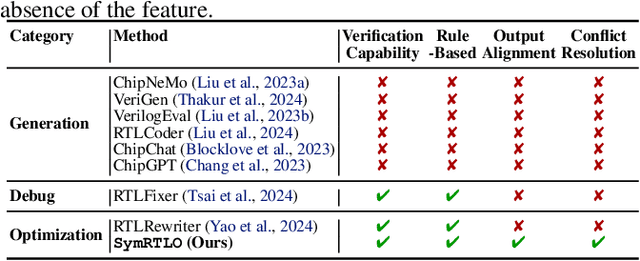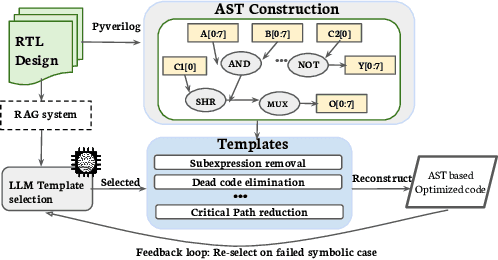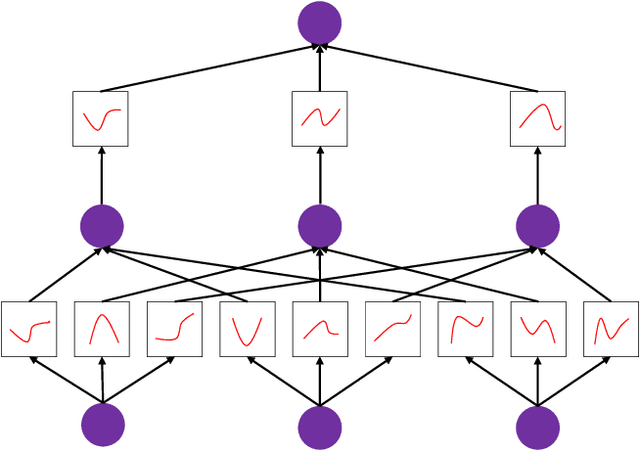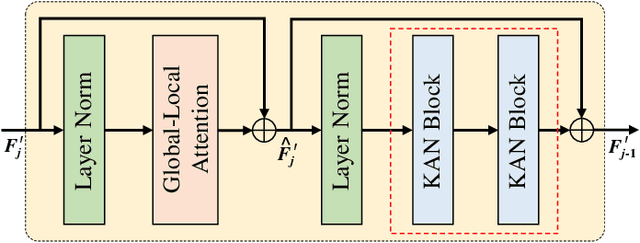Ziyao Wang
Eric
Lethe: Purifying Backdoored Large Language Models with Knowledge Dilution
Aug 28, 2025Abstract:Large language models (LLMs) have seen significant advancements, achieving superior performance in various Natural Language Processing (NLP) tasks. However, they remain vulnerable to backdoor attacks, where models behave normally for standard queries but generate harmful responses or unintended output when specific triggers are activated. Existing backdoor defenses either lack comprehensiveness, focusing on narrow trigger settings, detection-only mechanisms, and limited domains, or fail to withstand advanced scenarios like model-editing-based, multi-trigger, and triggerless attacks. In this paper, we present LETHE, a novel method to eliminate backdoor behaviors from LLMs through knowledge dilution using both internal and external mechanisms. Internally, LETHE leverages a lightweight dataset to train a clean model, which is then merged with the backdoored model to neutralize malicious behaviors by diluting the backdoor impact within the model's parametric memory. Externally, LETHE incorporates benign and semantically relevant evidence into the prompt to distract LLM's attention from backdoor features. Experimental results on classification and generation domains across 5 widely used LLMs demonstrate that LETHE outperforms 8 state-of-the-art defense baselines against 8 backdoor attacks. LETHE reduces the attack success rate of advanced backdoor attacks by up to 98% while maintaining model utility. Furthermore, LETHE has proven to be cost-efficient and robust against adaptive backdoor attacks.
EdgeLoRA: An Efficient Multi-Tenant LLM Serving System on Edge Devices
Jul 02, 2025Abstract:Large Language Models (LLMs) have gained significant attention due to their versatility across a wide array of applications. Fine-tuning LLMs with parameter-efficient adapters, such as Low-Rank Adaptation (LoRA), enables these models to efficiently adapt to downstream tasks without extensive retraining. Deploying fine-tuned LLMs on multi-tenant edge devices offers substantial benefits, such as reduced latency, enhanced privacy, and personalized responses. However, serving LLMs efficiently on resource-constrained edge devices presents critical challenges, including the complexity of adapter selection for different tasks and memory overhead from frequent adapter swapping. Moreover, given the multiple requests in multi-tenant settings, processing requests sequentially results in underutilization of computational resources and increased latency. This paper introduces EdgeLoRA, an efficient system for serving LLMs on edge devices in multi-tenant environments. EdgeLoRA incorporates three key innovations: (1) an adaptive adapter selection mechanism to streamline the adapter configuration process; (2) heterogeneous memory management, leveraging intelligent adapter caching and pooling to mitigate memory operation overhead; and (3) batch LoRA inference, enabling efficient batch processing to significantly reduce computational latency. Comprehensive evaluations using the Llama3.1-8B model demonstrate that EdgeLoRA significantly outperforms the status quo (i.e., llama.cpp) in terms of both latency and throughput. The results demonstrate that EdgeLoRA can achieve up to a 4 times boost in throughput. Even more impressively, it can serve several orders of magnitude more adapters simultaneously. These results highlight EdgeLoRA's potential to transform edge deployment of LLMs in multi-tenant scenarios, offering a scalable and efficient solution for resource-constrained environments.
RALLY: Role-Adaptive LLM-Driven Yoked Navigation for Agentic UAV Swarms
Jul 02, 2025Abstract:Intelligent control of Unmanned Aerial Vehicles (UAVs) swarms has emerged as a critical research focus, and it typically requires the swarm to navigate effectively while avoiding obstacles and achieving continuous coverage over multiple mission targets. Although traditional Multi-Agent Reinforcement Learning (MARL) approaches offer dynamic adaptability, they are hindered by the semantic gap in numerical communication and the rigidity of homogeneous role structures, resulting in poor generalization and limited task scalability. Recent advances in Large Language Model (LLM)-based control frameworks demonstrate strong semantic reasoning capabilities by leveraging extensive prior knowledge. However, due to the lack of online learning and over-reliance on static priors, these works often struggle with effective exploration, leading to reduced individual potential and overall system performance. To address these limitations, we propose a Role-Adaptive LLM-Driven Yoked navigation algorithm RALLY. Specifically, we first develop an LLM-driven semantic decision framework that uses structured natural language for efficient semantic communication and collaborative reasoning. Afterward, we introduce a dynamic role-heterogeneity mechanism for adaptive role switching and personalized decision-making. Furthermore, we propose a Role-value Mixing Network (RMIX)-based assignment strategy that integrates LLM offline priors with MARL online policies to enable semi-offline training of role selection strategies. Experiments in the Multi-Agent Particle Environment (MPE) environment and a Software-In-The-Loop (SITL) platform demonstrate that RALLY outperforms conventional approaches in terms of task coverage, convergence speed, and generalization, highlighting its strong potential for collaborative navigation in agentic multi-UAV systems.
Invisible Tokens, Visible Bills: The Urgent Need to Audit Hidden Operations in Opaque LLM Services
May 24, 2025Abstract:Modern large language model (LLM) services increasingly rely on complex, often abstract operations, such as multi-step reasoning and multi-agent collaboration, to generate high-quality outputs. While users are billed based on token consumption and API usage, these internal steps are typically not visible. We refer to such systems as Commercial Opaque LLM Services (COLS). This position paper highlights emerging accountability challenges in COLS: users are billed for operations they cannot observe, verify, or contest. We formalize two key risks: \textit{quantity inflation}, where token and call counts may be artificially inflated, and \textit{quality downgrade}, where providers might quietly substitute lower-cost models or tools. Addressing these risks requires a diverse set of auditing strategies, including commitment-based, predictive, behavioral, and signature-based methods. We further explore the potential of complementary mechanisms such as watermarking and trusted execution environments to enhance verifiability without compromising provider confidentiality. We also propose a modular three-layer auditing framework for COLS and users that enables trustworthy verification across execution, secure logging, and user-facing auditability without exposing proprietary internals. Our aim is to encourage further research and policy development toward transparency, auditability, and accountability in commercial LLM services.
CoIn: Counting the Invisible Reasoning Tokens in Commercial Opaque LLM APIs
May 19, 2025Abstract:As post-training techniques evolve, large language models (LLMs) are increasingly augmented with structured multi-step reasoning abilities, often optimized through reinforcement learning. These reasoning-enhanced models outperform standard LLMs on complex tasks and now underpin many commercial LLM APIs. However, to protect proprietary behavior and reduce verbosity, providers typically conceal the reasoning traces while returning only the final answer. This opacity introduces a critical transparency gap: users are billed for invisible reasoning tokens, which often account for the majority of the cost, yet have no means to verify their authenticity. This opens the door to token count inflation, where providers may overreport token usage or inject synthetic, low-effort tokens to inflate charges. To address this issue, we propose CoIn, a verification framework that audits both the quantity and semantic validity of hidden tokens. CoIn constructs a verifiable hash tree from token embedding fingerprints to check token counts, and uses embedding-based relevance matching to detect fabricated reasoning content. Experiments demonstrate that CoIn, when deployed as a trusted third-party auditor, can effectively detect token count inflation with a success rate reaching up to 94.7%, showing the strong ability to restore billing transparency in opaque LLM services. The dataset and code are available at https://github.com/CASE-Lab-UMD/LLM-Auditing-CoIn.
FedHQ: Hybrid Runtime Quantization for Federated Learning
May 17, 2025Abstract:Federated Learning (FL) is a decentralized model training approach that preserves data privacy but struggles with low efficiency. Quantization, a powerful training optimization technique, has been widely explored for integration into FL. However, many studies fail to consider the distinct performance attribution between particular quantization strategies, such as post-training quantization (PTQ) or quantization-aware training (QAT). As a result, existing FL quantization methods rely solely on either PTQ or QAT, optimizing for speed or accuracy while compromising the other. To efficiently accelerate FL and maintain distributed convergence accuracy across various FL settings, this paper proposes a hybrid quantitation approach combining PTQ and QAT for FL systems. We conduct case studies to validate the effectiveness of using hybrid quantization in FL. To solve the difficulty of modeling speed and accuracy caused by device and data heterogeneity, we propose a hardware-related analysis and data-distribution-related analysis to help identify the trade-off boundaries for strategy selection. Based on these, we proposed a novel framework named FedHQ to automatically adopt optimal hybrid strategy allocation for FL systems. Specifically, FedHQ develops a coarse-grained global initialization and fine-grained ML-based adjustment to ensure efficiency and robustness. Experiments show that FedHQ achieves up to 2.47x times training acceleration and up to 11.15% accuracy improvement and negligible extra overhead.
SymRTLO: Enhancing RTL Code Optimization with LLMs and Neuron-Inspired Symbolic Reasoning
Apr 14, 2025



Abstract:Optimizing Register Transfer Level (RTL) code is crucial for improving the power, performance, and area (PPA) of digital circuits in the early stages of synthesis. Manual rewriting, guided by synthesis feedback, can yield high-quality results but is time-consuming and error-prone. Most existing compiler-based approaches have difficulty handling complex design constraints. Large Language Model (LLM)-based methods have emerged as a promising alternative to address these challenges. However, LLM-based approaches often face difficulties in ensuring alignment between the generated code and the provided prompts. This paper presents SymRTLO, a novel neuron-symbolic RTL optimization framework that seamlessly integrates LLM-based code rewriting with symbolic reasoning techniques. Our method incorporates a retrieval-augmented generation (RAG) system of optimization rules and Abstract Syntax Tree (AST)-based templates, enabling LLM-based rewriting that maintains syntactic correctness while minimizing undesired circuit behaviors. A symbolic module is proposed for analyzing and optimizing finite state machine (FSM) logic, allowing fine-grained state merging and partial specification handling beyond the scope of pattern-based compilers. Furthermore, a fast verification pipeline, combining formal equivalence checks with test-driven validation, further reduces the complexity of verification. Experiments on the RTL-Rewriter benchmark with Synopsys Design Compiler and Yosys show that SymRTLO improves power, performance, and area (PPA) by up to 43.9%, 62.5%, and 51.1%, respectively, compared to the state-of-the-art methods.
Prada: Black-Box LLM Adaptation with Private Data on Resource-Constrained Devices
Mar 19, 2025Abstract:In recent years, Large Language Models (LLMs) have demonstrated remarkable abilities in various natural language processing tasks. However, adapting these models to specialized domains using private datasets stored on resource-constrained edge devices, such as smartphones and personal computers, remains challenging due to significant privacy concerns and limited computational resources. Existing model adaptation methods either compromise data privacy by requiring data transmission or jeopardize model privacy by exposing proprietary LLM parameters. To address these challenges, we propose Prada, a novel privacy-preserving and efficient black-box LLM adaptation system using private on-device datasets. Prada employs a lightweight proxy model fine-tuned with Low-Rank Adaptation (LoRA) locally on user devices. During inference, Prada leverages the logits offset, i.e., difference in outputs between the base and adapted proxy models, to iteratively refine outputs from a remote black-box LLM. This offset-based adaptation approach preserves both data privacy and model privacy, as there is no need to share sensitive data or proprietary model parameters. Furthermore, we incorporate speculative decoding to further speed up the inference process of Prada, making the system practically deployable on bandwidth-constrained edge devices, enabling a more practical deployment of Prada. Extensive experiments on various downstream tasks demonstrate that Prada achieves performance comparable to centralized fine-tuning methods while significantly reducing computational overhead by up to 60% and communication costs by up to 80%.
Speculate, then Collaborate: Fusing Knowledge of Language Models during Decoding
Feb 11, 2025Abstract:Large Language Models (LLMs) often excel in specific domains but fall short in others due to the limitations of their training. Thus, enabling LLMs to solve problems collaboratively by integrating their complementary knowledge promises to improve their performance across domains. To realize this potential, we introduce a novel Collaborative Speculative Decoding (CoSD) algorithm that enables efficient LLM knowledge fusion at test time without requiring additional model training. CoSD employs a draft model to generate initial sequences and an easy-to-learn rule or decision tree to decide when to invoke an assistant model to improve these drafts. CoSD not only enhances knowledge fusion but also improves inference efficiency, is transferable across domains and models, and offers greater explainability. Experimental results demonstrate that CoSD improves accuracy by up to 10\% across benchmarks compared to existing methods, providing a scalable and effective solution for LLM-based applications
Kolmogorov-Arnold Network for Remote Sensing Image Semantic Segmentation
Jan 13, 2025



Abstract:Semantic segmentation plays a crucial role in remote sensing applications, where the accurate extraction and representation of features are essential for high-quality results. Despite the widespread use of encoder-decoder architectures, existing methods often struggle with fully utilizing the high-dimensional features extracted by the encoder and efficiently recovering detailed information during decoding. To address these problems, we propose a novel semantic segmentation network, namely DeepKANSeg, including two key innovations based on the emerging Kolmogorov Arnold Network (KAN). Notably, the advantage of KAN lies in its ability to decompose high-dimensional complex functions into univariate transformations, enabling efficient and flexible representation of intricate relationships in data. First, we introduce a KAN-based deep feature refinement module, namely DeepKAN to effectively capture complex spatial and rich semantic relationships from high-dimensional features. Second, we replace the traditional multi-layer perceptron (MLP) layers in the global-local combined decoder with KAN-based linear layers, namely GLKAN. This module enhances the decoder's ability to capture fine-grained details during decoding. To evaluate the effectiveness of the proposed method, experiments are conducted on two well-known fine-resolution remote sensing benchmark datasets, namely ISPRS Vaihingen and ISPRS Potsdam. The results demonstrate that the KAN-enhanced segmentation model achieves superior performance in terms of accuracy compared to state-of-the-art methods. They highlight the potential of KANs as a powerful alternative to traditional architectures in semantic segmentation tasks. Moreover, the explicit univariate decomposition provides improved interpretability, which is particularly beneficial for applications requiring explainable learning in remote sensing.
 Add to Chrome
Add to Chrome Add to Firefox
Add to Firefox Add to Edge
Add to Edge